The very fact this magazine regularly publishes a Women in Engineering supplement is symptomatic of a problem that stubbornly persists.
Despite the best efforts of many figures both inside and outside the engineering industry, female participation in the sector as a whole remains at embarrassingly low levels in the UK.
A recent report, carried out by the Centre for Economics and Business Research (Cebr) on behalf of the Royal Academy of Engineering, ranked the UK 58th of 99 for gender parity, behind countries including Brazil and Greece. Statistics from EngineeringUK show that the UK has the lowest proportion of female engineers across the whole of Europe, with just 9 per cent. According to UNESCO data from 2013, women make up just 22 per cent of engineering graduates. The statistics are simultaneously unsurprising and depressing, and the underlying issues are familiar.
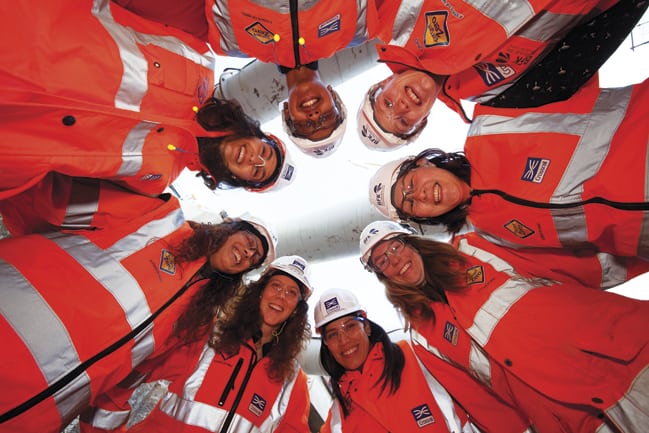
“The UK has a disproportionately low share of women who study STEM subjects to 18,” Dr Hayaatun Sillem, deputy CEO and director of strategy at RAEng, told The Engineer. “Only around 20 per cent of A-level physics students are girls, for example, a percentage that has not changed significantly over the last 25 years.”
The problem is by no means confined to the UK. Failings here are mirrored in the US, where, despite widespread programmes to involve more women in engineering, participation rates have been virtually static for more than two decades.
“In the US since 1993, it has only increased the share of women undergraduates in engineering by 3 per cent,” said Dr Julie A Kmec, a sociology professor at Washington State University (WSU).
Rather than resorting to the introspection that so often accompanies this issue, Kmec and her colleagues are now looking outwards. In an effort to find solutions to the gender imbalance at home, new research is under way to examine how other countries are getting it right. And many of those countries have predominantly Muslim populations. Specifically, the study is looking at Jordan, Malaysia, Saudi Arabia and Tunisia.

“The high GDP countries in the Gulf tend to have female representation up to 60 per cent in fields such as electrical engineering, computer engineering, chemical engineering and bioengineering,” said Dr Ashley Ater Kranov, a professor at WSU’s School of Electrical Engineering and Computer Science.
A prominent member of the research team, Ater Kranov also has an academic role at Princess Nourah bint Abdulrahman University in Riyadh, Saudi Arabia, and has been studying the phenomenon of high participation in predominantly Muslim countries
(PMCs) for several years.
“Saudi only recently offered engineering as a degree option to women at one public university a few years ago,” she said. “However, it has had for years extremely high female representation in computer science, information science and IT. What is interesting as well, is that in my informal conversations with faculty and students all over the Gulf, female students tend to significantly outperform men in these particular fields.”
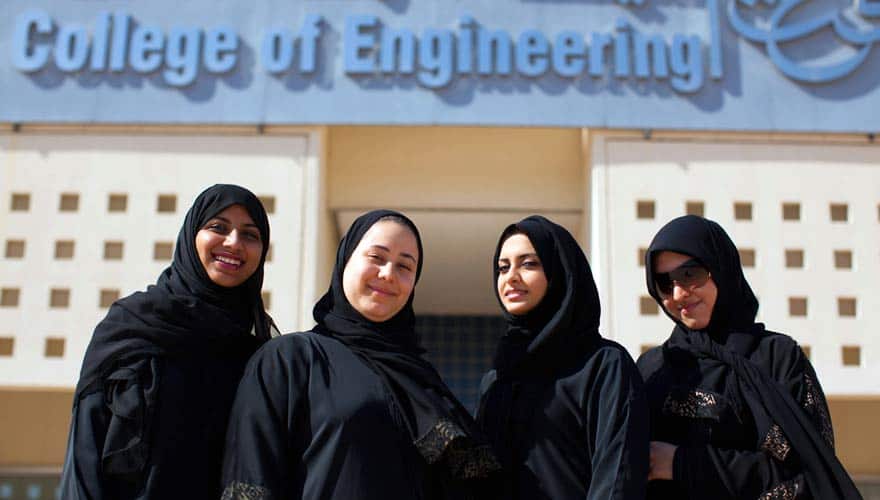
So not only are women participating in STEM subjects in much higher numbers than in the West, they are also excelling. But what are the factors drawing them in and, conversely, driving their Western counterparts away? According to Kmec, there are a variety of interlocking socio-political elements at play.
“We have this sort of ‘be happy, follow your dreams’ mentality, coupled with a macro-cultural value system… a system of gender centralism, which essentially is this notion that men are good at this, and women are good at something different,” she said.
“When I say the word ‘engineer’ in the US, I think of a man,” Kmec admitted, a trace of guilt inflecting her voice. “When you say ‘engineer’ in some of these countries, the first thought that
comes to mind – especially if you say a chemical engineer – it’s not a man.
Gender equality has long been a pillar of Islamic doctrine, and the religion has a rich history of empowering women through education.
“Some fields of engineering are actually gender-typed female in these countries, at least more so than here, because they don’t involve interaction in public… I know for a fact that in Saudi Arabia, women are highly discouraged from majoring in communications, for example, because that puts them too much in the public space.”
While there are undoubtedly social restrictions in some Muslim countries that could push women towards ‘backroom’ engineering roles, it’s important to acknowledge that these do not apply across the entirety of Islam. In fact, gender equality has long been a pillar of Islamic doctrine, and the religion has a rich history of empowering women through education.
“Although there is a perception that Islam represses women and does not give them the freedom to pursue education, this is far from the truth,” said Fatumina Abukar, a biochemical engineering PhD student at UCL who was recently shortlisted for a WISE (women in science, technology and engineering) Rising Star Award.
“Science and education have always been very encouraged in Islam. For example, Mariam Al-Ijliya, who lived during the 10th century in Syria, was employed by the ruler of the city as an astrolabe builder. In addition, one of the oldest universities in the world, University of Qarawiyyin [Morocco] was founded by a Muslim woman, Fatima al-Fihri, before women in the West were even allowed to go to university.”
In relation to the high rates of female engineers in PMCs today, Abukar believes there are two key factors at play. First, significant numbers of Muslim countries are either still developing, or are in politically unstable parts of the world. Studying engineering makes sense from a practical standpoint, as it is likely to provide a steady income.
“Second, in Islam, one is encouraged to pursue careers that will ultimately benefit society, so the population will tend to gravitate more towards professionally designated careers,” said Abukar.
These points are echoed somewhat by Kmec. In the US and the UK, physical infrastructure is not as visibly in need of improvement when compared to most developing nations. It makes sense that if you grow up in a country where there is a clear and obvious requirement for engineers, it’s a career path you’re more likely to follow, both for practical and moral reasons.
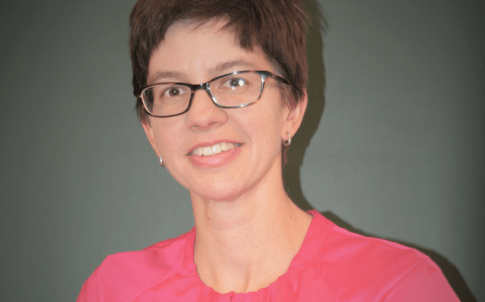
“We have a developed economy,” said Kmec. “We have infrastructure, we have roads. In developing countries, the economy does not necessarily allow people to have a choice. In Pakistan, for example, there are limited roads and bridges, and they get washed out every time there’s a storm. And so the infrastructure of countries that are developing… means people go to study what’s important for their country.”
The four countries in the US study were chosen for a variety of reasons, not least due to existing social connections the researchers already have. As mentioned, Ater Kranov has an academic role at a Saudi university, where she spends a substantial part of her time. Kmec’s co-lead on the project, Purdue University’s Dr Jennifer DeBoer, worked across Malaysia and Tunisia for her dissertation. And Dr Nehal Abu-Lail, another WSU engineering professor involved in the research, is a Jordanian national. Incidentally, she comes from a family of six, where all five daughters have become engineers.
A common thread across the four nations is the extent to which their populations practise Islam, with Malaysia being the one outlier at just 63 per cent. Jordan is 97 per cent Muslim, Saudi Arabia 93 per cent, and Tunisia almost entirely homogeneous at 99.5 per cent. By contrast, Muslims make up just 0.9 per cent of the population in the US, and 4.5 per cent in the UK. According to Kmec, however, there are socio-economic and political variations across the different countries that should enrich the research.
“We didn’t realise until we looked at the information,” she said, “but there’s great variation within these countries in terms of their GDP, in terms of labour force participation of women, their scores on individualism, women’s rights even. Women had the right to vote as early as 1957 in Tunisia, but only in 2015 in Saudi Arabia.
Gender imbalance has been the standard in Western engineering for so long that many now view it as a cultural norm.
“The women who participate in the focus groups will answer a quantitative survey, just giving basic demographic background characteristics of themselves. But the whole point is to be able to figure out what women are talking about, and how we can use the information we gather to craft a better quantitative tool that we can apply elsewhere in a survey.”
Ultimately, Kmec and her colleagues aim to shed light on the fundamental issues that are keeping female participation so low in countries such as the US and the UK. By exploring the gender balance of the PMCs in their study, the researchers will hopefully gain some insight into imbalance in the West – an imbalance that persists in the face of significant effort and resource.
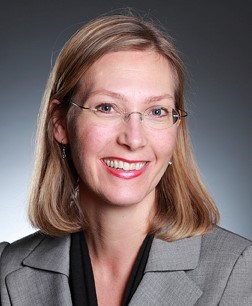
“Not much at all has been done to study what we are studying in these target countries,” explained Ater Kranov. “That said, there’s been a ton on what may be the factors to such low representation in the US. However, in spite of investing billions, the US hasn’t been able to make representation any higher, save for at a few schools that have made it a priority.”
Gender imbalance has been the standard in Western engineering for so long that many now view it as a cultural norm. Readers of The Engineer occasionally express their exasperation at the amount of coverage the topic receives, believing we should simply accept the status quo and
move on. But encouraging more women into the industry is absolutely vital, and should not be dismissed as an exercise in optics. The long-term health of the industry and even the wider economy are at stake.
“We know that engineering makes a significant contribution to society, so increasing the number of women in engineering is therefore critical to maintaining and improving the prosperity of the UK,” said RAEng’s Dr Sillem.
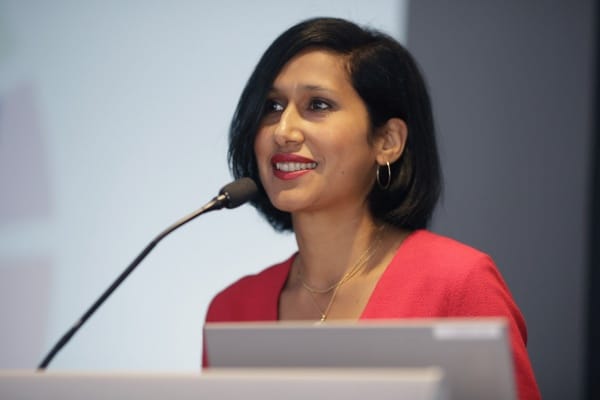
“Addressing gender diversity will not only help to bridge the skills gap, but could also improve business performance: evidence shows that companies in the top quartile for gender diversity are 15 per cent more likely to have financial returns above their national industry median.”
In an industry already struggling to generate enough skilled professionals to meet demand, it would be madness to willingly accept the shockingly low rates of female participation that currently exist. Shrugging of shoulders and essentially writing off 50 per cent of the population is not an option. On top of this, the economic upshot of gender parity is potentially massive, as Sillem points out.
“If gender parity in engineering graduates was achieved – which would equate to around 36,000 female graduates per year – the UK would climb from 14th to seventh in the Engineering Index, putting it above countries such as the Republic of Korea, Belgium, Finland, and Hong Kong. This would boost UK GDP per capita by 7 per cent, according to the Cebr study.”
Shifting the gender imbalance would have a very tangible impact, not least on the women driving the growth themselves. By looking to the example of the East, let’s hope the West can start finding some answers.

JLR teams with Allye Energy on portable battery storage
This illustrates the lengths required to operate electric vehicles in some circumstances. It is just as well few electric Range Rovers will go off...